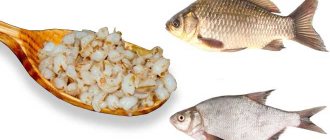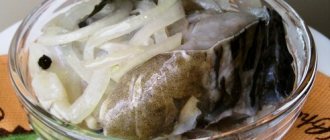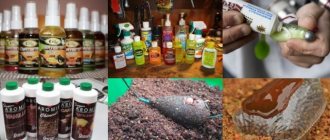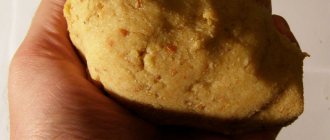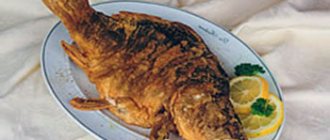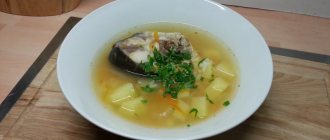Fishing is one of the most popular leisure activities for men. Sitting with a fishing rod on the shore of a pond requires patience and at the same time involves a certain excitement. In general, it combines the incompatible. However, in order for all efforts not to be wasted, it is necessary to approach the fishing process extremely seriously.
It is necessary to take care not only of a good fishing rod, the presence of a boat, the right choice of place for fishing, a convenient shore of a reservoir or boat, and appropriate equipment, but also of bait.
Bait ensures the accumulation of fish in the fishing area, which greatly contributes to the success of fishing. To prepare bait, a variety of products are used that fish love, but in addition to this, flavoring is used in the bait.
The main task of this component is to spread throughout the reservoir and attract fish to the bait and bait site. One of the most popular flavors is anise.
Anise drops for fishing
Anise is an annual plant that has been used as a spice since ancient times. For baiting fish, which in many ways ensures an excellent bite, anise oil is most often used. There are many reasons for this, the most important of which is the relatively low cost of anise itself and its processed products.

The reasons for the low cost of such a spice as anise are the ease of cultivation and cultivation. Anise is a fairly unpretentious plant that does not require any special conditions.
Anise also has a subtle and delicate aroma, which is pleasant to humans and attracts fish. The subtle aroma of the spice attracts fish, which ensures productive fishing.
Anise is used to prepare groundbait in the form of drops, which can be either an essential oil prepared from this plant or an alcohol solution containing about fifteen percent anise oil. In addition, the seeds of this plant or powder from them can be used.
To prepare bait for summer fishing using anise, you should use plant products such as various cereals and corn processing products.
It is also fashionable to add animal food, for example, dried worms or bloodworms. The concentration of anise in the form of drops, seeds or powder should be between two and five percent in the case of anise drops.
This amount of flavoring is quite enough to attract fish with a pleasant smell and interest the bait placed on the bottom.
If powder is used to prepare bait, the content of anise flavor in the composition should vary from two to three percent of the total mass of the mixture.
To prepare bait for winter fishing, it is necessary to use not only plant food, cereals, for example, but also bloodworms, worms, etc. The fact is that in winter the fish are hungry, so animal food mixed with such an attractive flavor as anise.
If we talk about bait for attracting fish in autumn and spring, then they are not much different from summer and winter, except that they can be something in between.
If we talk about the compatibility of ingredients, then anise in the form of essential oil or powder is best combined with burdock moth larva, as well as with cereals ground in coffee grinders
Before mixing the cereal with anise, it must be moistened so that it easily rolls into a lump. Water gives the mixture viscousness and prevents it from spreading over a long distance.
The mixture is dropped to the bottom in a container or rolled into a ball and dropped to the bottom with a simple throw. If the bait has been previously wetted, it will begin to decompose only when it touches the bottom, resulting in the formation of a fragrant and appetizing cloud, which attracts fish.
When baiting fish, you want to attract them, not overfeed them, so don't prepare too much bait.
What kind of fish can you catch with anise?
It is often recommended to use anise when fishing for all peaceful fish, but it is better to use it when hunting for crucian carp and bream, for which anise drops show impeccable results. When fishing for bream, drops are added very often, since other forms of the substance bring less results. To increase the amount of catch, it is important to choose favorite places for bream: shell rocks, pits, etc.
Anise drops, which are used for fishing, do not always bring a good catch. We recommend trying the method on the selected reservoir, but if there are no bites, it is better to use clean bait without any aromatic additives. Comparing the effectiveness of casting will help determine the feasibility of using droplets.
You can combine drops with anise oil without sparing the liquid when preparing the bait, but you should always leave part of the mixture without impurities in case there are no bites for anise.
Crucian carp reacts poorly to the smell of ammonia; the use of drops is ineffective and often drives the fish away from the feeding area. When chasing crucian carp, it is better to use water-based drops or anise oil. If the attractant was prepared at home, it is better to boil the bait in the water left over from preparing anise seeds.
Read more
How and what to catch trout with?
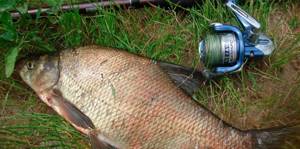
Bream responds very well to the smell of anise.
Anise oil
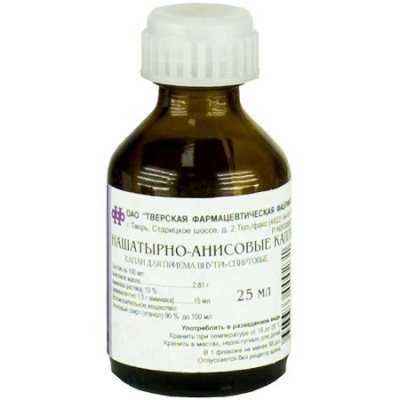
Anise oil is a product of processing parts of the anise plant, namely its seeds, leaves and stems.
As a result of steam distillation, which is used in processing, a colorless liquid is obtained, although sometimes it can still have a yellowish tint.
This product is very popular because it is used in many areas.
Anise oil is actively used in cooking as a flavoring and spice, in medicine, since anise has a number of unique properties, in the cosmetic industry. Fishing was no exception.
A distinctive feature of anise oil is that it does not tend to harden even at the lowest temperatures.
Release forms
Today, anise products are produced in three main forms: drops, oil, powder.
Drops
Anise drops are often made with an alcohol base (ammonia). This is the cheapest product sold on the shelves of all fishing stores. If there is no store nearby, ammonia-anise drops for fishing are easy to make yourself, but you will have to grow the plant; it grows well at home.
To make drops you will need:
- ammonia;
- flower seeds;
- gauze;
- coffee grinder
Cooking method:
- Grind the main component in a coffee grinder.
- Pour the powdery substance into a glass bottle, preferably tinted glass, and fill it with alcohol.
- Let the mixture steep for a day so that the active components from the seeds are transferred to the liquid.
- Using gauze, remove all solid particles remaining from the powder.
Read more
How to catch catfish from the shore in summer?
There is a method for preparing water-based drops, but the technology is so complex that it is impossible to recreate it at home.
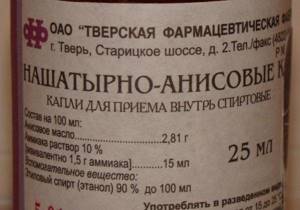
The cheapest product sold in fishing stores is ammonia-anise drops
Oil
Anise oil is a product of steam distillation of the plant. The result is a clear liquid, sometimes with a yellow tint. Like other fishing oils, anise has a strong and pleasant aroma. An interesting feature of the oil is its low crystallization temperature; even in winter it does not harden.
Anise oil for fishing is the most aromatic product of all presented. It is better to add it in small quantities, as the aroma spreads over long distances. Fishing oil is a more expensive product, although almost all fishermen can afford it.
Powder
These are pure plant seeds, only ground in a factory. It is mainly sold in pharmacies and used in the medical industry, but the powder also has a place in fishing. It enhances biting activity in many species of fish. If we add powder to bait, its concentration should not exceed 3-5% of the total weight.

The most fragrant product is anise oil
Anise drops for bait
As mentioned above, anise drops are an excellent flavoring agent for attracting fish, however, as in many other cases, you should not overdo it. The content of anise drops in the bait should not exceed five percent, but not less than two.
Anise drops for bream
Bream is a predatory fish that prefers animal food. So when using anise to prepare bait, it is best to add more animal feed.
Anise drops for crucian carp
Crucian carp really love the aroma of anise, so in order for catching this fish to be successful, you need to add a small amount of drops to the feeding mixture and moisten the bait.
Barley and anise drops
Just like any other cereal. Barley goes well with a flavoring such as anise. So you can safely mix these two ingredients into a single mixture.
Bread crumb and anise drops
Anise drops and bread crumb, especially rye bread, which itself has an attractive aroma for fish, go well together. When preparing bait, you need to moisten and knead the crumb, and then lubricate it with anise drops.
Sweet dough and anise drops
Some fish are very fond of sweets and a sweet smell, so it is fashionable to use a piece of sweet dough, smeared with anise drops, as bait.
Dough with garlic and anise drops
A piece of dough, which contains garlic and anise drops, is an excellent bait for fish, because like anise, garlic has an attractive aroma, which attracts fish to the fishing spot. There she may well swallow the bait.
Pellets and anise drops
Spools are bait attached to a hook. Rolls are made from corn, wheat, pea or semolina, which should be moistened with water.
A small amount of anise drops should be added to the water. In this case, anise lures the fish with its pleasant aroma, as a result of which it gets hooked when trying to swallow the bait.
Oatmeal and anise drops
Oatmeal is ground, pre-roasted cereal grains. Often these are oats and barley. Oatmeal is mixed with anise drops and water.
If bait is made, then the mixture is rolled into a ball and dropped to the bottom of the reservoir, and if bait is used, then a spool is formed from it, which is subsequently placed on a hook. The content of drops in the composition of groundbait or groundbait should not exceed five percent.
Types of anise bite activators
Anise drops, anise oil, powder, as well as various compositions containing anise are used as an effective attractant. Anise flowers contain a large number of trace elements and nutrients.
Anise-based drops have the following advantages:
- powerful odor attractive to fish;
- low cost;
- economical consumption of the composition.
Where can I buy?
You can buy anise drops in a store that sells products intended for fishing, as well as in a regular pharmacy. The fact is that fishing is far from the only area where anise is used.
Alcohol solution and essential oil are used as an adjuvant for the treatment of certain diseases, as well as for prevention. In addition, anise, which is a spice, is actively used in cooking, for example, to give baked goods a pleasant aroma, so the seeds of this plant and their powder can be found in any market.
The use of anise drops in the preparation of fertilizer
In order to use anise drops, creating an effective top dressing, you should perform a series of sequential actions:
- choose a base for feeding, which can be any cereal;
- grind the cereal (or use the whole kernels);
- cook the cereal;
- add corn flour to the composition;
- add anise drops;
- mix the product until it forms a dough.
The resulting product should easily roll into balls and not break into pieces when hitting the surface of the water. As a result of the fall, the activator must leave a stern cloud.
When preparing for summer fishing, make sure that the proportion of anise drops does not exceed 1/20. For fishing in winter, the concentration of the attractant should be reduced.
Types of combinations with anise drops
It is advisable to use anise drops in combination with pearl barley. You can add hemp, toasted sunflower seeds and berries growing on the shore of a pond to this product.
The combination of anise drops with bread crumb is popular among fishermen. To do this, knead the bread with milk and egg yolk (or honey), and vegetable oil. Then add drops of anise to the composition.
You can mix anise products with sweet dough, because the majority of fish are lovers of sweets.
Some fishermen use bait based on dough, boiled potatoes, and vegetable oil. Anise and garlic juice are added to the composition.
A product based on oat grains with the addition of anise drops is also popular.
Please note that purchased anise drops have a long shelf life (up to 2 years). The product prepared at home can be stored for up to 2 weeks.
When is the best time to use anise?
Anise for fishing is often called a bite activator due to its effective attraction of the attention of prey. Anise is found in fishing bags much more often than other attractants due to the cheapness of the drops and the effective bite.
In nature, anise is a flower with a successful combination of microelements; it is used in the medical, culinary fields, cosmetology, and today it has become widespread in fishing.
Anise oil drops have a number of advantages:
- strong, attractive odor;
- affordable price, the purchase will not hit the pocket of a fisherman with any level of income;
- economical consumption, add 1-3 drops to the bait.
Fishing in certain reservoirs is sometimes unsuccessful, since not all fish react well to this aroma. Sometimes the fish is full, it doesn’t like the composition of the mixture, or the time for fishing is simply chosen wrong, then you can’t count on an active bite.
The bite activator anise is equally good at any time of the year. However, depending on this, the method of use changes. For example, in the summer you need to add a couple of percent more anise than at other times; any bait will do. In winter, you need a little less anise, and the bait at this time of year should be protein. This is due to the fact that in winter the fish experience severe hunger.
The bite activator anise is equally good at any time of the year, but depending on this the method of use changes
As mentioned above, anise drops are an excellent flavor for attracting fish, but there is no universal flavor, so before using it to attract fish, you need to make sure that it is to their taste.
To check, just moisten the nozzle with essential oil or an alcohol solution of anise. If the result was positive, then you can safely use this spice to prepare bait and flavor the bait.
Oil oil
Posted by Podilo September 17, 2012
We talk a lot about groundbaits, baits and methods of preparing them. But we have never talked about various types of oils that can be usefully used in fishing. First, a little about what oil is in principle.
Oil and its beneficial properties
The components of the oil are directly fats and essential oils, which provide the product with its special, characteristic smell and color. Oil is an incredibly valuable and healthy product for both humans and fish, because... contains substances that no organism is able to synthesize on its own. As for the benefits of oil in terms of fishing, it is its ability to practically not dissolve in water. Oil can be given to fish in large quantities without fear that you will overfeed it. In this case, the fish will be able to taste the oil in negligible quantities. The fact is that fish can only taste the oil if it reaches its receptors in a dissolved state. The oil also has good adhesion to various components and products, i.e. has good enveloping property. It also has such a valuable quality for fishermen as hydrophobicity, a kind of water-repellent property. The liquid that gets on the oiled product seems to be repelled or flows off it. The oil also mixes well with another type of oil or fat or even essential oil.
How fish sense and recognize taste In order to use oil correctly and effectively in fishing, you first need to delve a little into the anatomy of fish. To understand how they sense and recognize food. The whole specificity of the olfactory organs of fish is that they can only sense those substances that are dissolved in water. For example, fish are unable to sense those odors or other volatile chemical compounds that we smell with our nose. Because she does not have the ability to breathe, and therefore consume air. But this does not mean that they do not feel anything at all. They are much better and more sensitive to tastes, i.e. dissolved substances. Fish senses taste through olfactory and gustatory receptors.
Now to the point. What is oil used for in fishing? Fishermen use oil to attract fish by stimulating their taste buds with oily compounds. To achieve this, you need to make the oil soluble in water. There are several ways how this result can be achieved.
The simplest one, we assume that this is what fishermen used hundreds of years ago, is mixing butter with dough and boiled cereals. The oil seems to envelop tiny particles of the product, which, dissolved in water, reach the fish receptor. The oil particles themselves are somewhat lighter in weight than water, so they sink. So, turbidity forms in the water, which spreads well. For fish, the taste of oil and small particles of flour and cereal is quite acceptable.
Another option is to dissolve the oil in some substance that can dissolve it. And after that you need to pour the oil mixture into the water. This will result in some kind of emulsion in which the smallest particles of oil in the form of tiny bubbles will be evenly distributed in the water space. In this case, the oil droplets will not float to the top, as is usually the case, and form into large oil droplets.
And now the main question is, what can this oil be dissolved in? Various types of alcohols are best suited for this. Ethyl alcohol is most often used, but glycerin will also work. Moreover, it is a representative of alcohol, which is considered related to various fats. A larger volume of oil can be dissolved in glycerin, which means that the fish will receive much more oil than from the first method. It is worth remembering that along with the oil, the fish also absorbs the solvent itself in which you diluted the oil mixture, and this, as we said, is alcohol. In principle, ethyl alcohol is familiar to fish. For example, they happily eat spoiled berries that have fallen into the water, which are already beginning to ferment and release alcohol. But its concentration in the berry and in your solvent will, of course, vary greatly. A high alcohol content will most likely spook the fish. The ideal alcohol content in the bait mixture is no more than 2%.
Hemp oil for fishing
To increase the bite in ponds with stagnant water, it is advisable to use an oil extract from hemp seeds. It works no worse, and sometimes better, than attractants with a more intense and pungent aroma, since its smell is more familiar and natural to the inhabitants of lakes and dams. Hemp oil for fishing enhances the effect of bait significantly, this is especially noticeable in flowing water (rivers).
Insoluble in water, but at the same time releasing the finest pheromones, it is considered an excellent option for attracting fish. That is why hemp oil for fishing is added to dough or semolina, as well as other pastes for baits.
- The product is especially effective for catching crucian carp, roach and bream using a pea mastyrka.
Simple bait recipe
You can make your own bait with hemp as follows:
- Take hemp seeds and rinse well.
- Place the seeds in a bowl and add water, then leave them for a day.
- The seeds will be ready as soon as they sink to the bottom.
- After this, the cannabis is placed on the fire and cooked for half an hour.
- As soon as the grains begin to shoot white tongues, they are ready.
- Take as much grain as you need, and the rest can be put in the freezer.
Of course, it is used as bait from mid-July to mid-September, although many fishermen use it regularly and do not go fishing without hemp, especially when they realized how effective it is. If you use hemp itself for bait, constantly throwing it to the float, then you need a lot of it, and using such an effective product in such quantities is not entirely rational.
Best before date
After this period they will become unusable. Store-bought anise drops can be stored for a couple of years after the bottle has been opened.
The shelf life of the drops is indicated on the packaging of the drops, and anise seeds and anise powder can be stored for a very long time if storage conditions are met.
It is worth noting that anise drops have certain storage conditions, namely keep in a cool and dark place.
Oil oil
Posted by Podilo September 17, 2012
We talk a lot about groundbaits, baits and methods of preparing them. But we have never talked about various types of oils that can be usefully used in fishing. First, a little about what oil is in principle.
Oil and its beneficial properties
The components of the oil are directly fats and essential oils, which provide the product with its special, characteristic smell and color. Oil is an incredibly valuable and healthy product for both humans and fish, because... contains substances that no organism is able to synthesize on its own. As for the benefits of oil in terms of fishing, it is its ability to practically not dissolve in water. Oil can be given to fish in large quantities without fear that you will overfeed it. In this case, the fish will be able to taste the oil in negligible quantities. The fact is that fish can only taste the oil if it reaches its receptors in a dissolved state. The oil also has good adhesion to various components and products, i.e. has good enveloping property. It also has such a valuable quality for fishermen as hydrophobicity, a kind of water-repellent property. The liquid that gets on the oiled product seems to be repelled or flows off it. The oil also mixes well with another type of oil or fat or even essential oil.
How fish sense and recognize taste In order to use oil correctly and effectively in fishing, you first need to delve a little into the anatomy of fish. To understand how they sense and recognize food. The whole specificity of the olfactory organs of fish is that they can only sense those substances that are dissolved in water. For example, fish are unable to sense those odors or other volatile chemical compounds that we smell with our nose. Because she does not have the ability to breathe, and therefore consume air. But this does not mean that they do not feel anything at all. They are much better and more sensitive to tastes, i.e. dissolved substances. Fish senses taste through olfactory and gustatory receptors.

